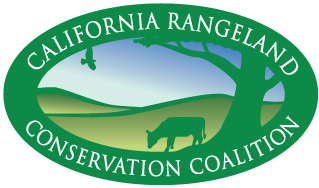Summit: February 24, 2023
For ongoing information
Subscribe: Rangeland Field Notes E-Newsletter
(formerly E-Update)
Like: I Love California Rangelands Facebook Page
Publications of Interest. See also Resources Page.
The California Rangeland Resolution.
California’s Working Landscapes – Annual Rangelands Fact Sheet, a resource for better understanding and decision-making. Dr. Leslie Roche, University of California Cooperative Extension.
Cows and Climate YouTube, Dr. Frank Mitloehner, UCCE Davis – a visual description of global rangelands and farmland
Livestock’s Impact on Greenhouse Gasses and California’s Rangelands. By Theresa Becchetti and Sheila Barry, University of California Cooperative Extension.
Bring in the cows – Grazing may be the best hope for a threatened butterfly introduces Dr. Stu Weiss’ Summit topic. “Smog contains not just carbon dioxide but also a cocktail of nitrogen-rich compounds. Swept by the winds onto nearby rangelands, these compounds act like spray-on fertilizer, encouraging the rampant growth of Italian rye, wild oats and soft chess. Left unchecked, these aggressive annuals quickly overrun low-lying native plants, including dwarf plantain, the chief food source for Bay checkerspot caterpillars. And this, of course, is where the cows come in.”
Sustaining Ecosystem Services From Private Lands in California: The Role of the Landowner. This paper describes the changing landownership patterns and what it means for efforts to increase and sustain ecosystem service production from private lands. By Shasta Ferranto, Lynn Huntsinger, and Maggi Kelly
Dr. Stephanie Larson, UCCE Sonoma and Marin counties shares a useful document to use in outreach efforts. Impact of Grazing on Endangered Species. Permission of Sonoma County Farm Bureau.
Cows? In California? Rangelands and Livestock in the Golden State. By Lynn Huntsinger and James W. Bartolome, 2014. “Grazing is California’s most extensive land use. The state has more than 40 million ha of land, of which nearly 23 million ha can be considered rangeland. Approximately 47% of these rangelands are owned by the federal government and another 12% by other public agencies. Today’s rancher is part of the fascinating, adaptive new generation that is pursuing rangeland production, and a decent living, in a transforming state. In this paper we offer an introduction to rangelands and livestock production in the “Golden State.”
Livestock’s Impact on Greenhouse Gasses and California’s Rangelands
By Theresa Becchetti and Sheila Barry, University of California Cooperative Extension “Livestock’s Long Shadow”, a United Nations Report, released by the Food and Agriculture Organization (FAO) in 2006 stated that livestock produced more greenhouse gases than...
Improving Implementation of the Endangered Species Act: Finding Common Ground Through Common Sense
Thompson and Henson Improving...ESA

